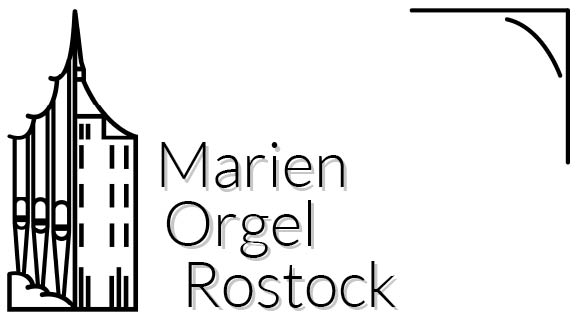Extended Advisory Board

On 29 September 2021, the first meeting of the enlarged advisory board for the organ restoration project took place. The enlargement was initiated by new bulding laws of the Lutheran Church of North Germany.
The members of the former advisory board have been integrated in the new one. This added to the fact that the new board comprises quite many people while gathering competence from different fields.
Following a musical presentation of the instrument, a vital discussion was begun. It became obvious that there is a dedicated interest in a sustainable solution of high-quality for an organ in St. Mary’s church. The demands of the future should receive more attention than following ideas of reconstructing or retaining the state of the past. The extant instrument does not meet the needs and expectations experts and the general public would have in regard of the meaning of this church, except in optical aspects.
Two options of tonal design will not be discussed anymore:
The first is the reconstruction of the 1793 state, meaning the partly hypothetical reconstruction of a large instrument in North German late baroque style, following the school of Joachim Wagner, the second is the refining, completing and repair of the 1938 concept, which has meanwhile been slightly modified anyway.
Thus, the poject will turn from terms like restoration or repair towards reorganisation, rebuild or new build using older material.
The next step will see a smaller group of organ experts and organists untertaking a trip to certain instruments, as it was already planned for spring 2020 but cancelled due to corona issues.
The results of this research will add to the consultations regarding a concept for the future instrument. This concept will help answering the questions which parts of the extant instrument will be kept oder discarded (put into storage or used otherwise).
The demand for a thorough evalutation of the components of today’s instrument was primarily articulated by the members of heritage and monuments authorities. But except the facade, no component of the instrument shows an extraordinary historic value, so the future concept of the organ will guide all these decisions.
Participants:
- Julia Ahnert (Schwerin), building department of Mecklenburg-Vorpommen diocese
- Prof. Franz Danksagmüller (Lübeck), Professor of Orgel and Organ Improvisation at Lübeck Academy of Music, composer with focus on organ and electronic means of expression
- Beatrix Dräger-Kneißl (Schwerin), heritage and conservation authority for Mecklenburg-Vorpommern state, responsible for pipe organs
- Friedrich Drese (Malchow), organ expert
- Martin Dücker (Freiburg/Stuttgart), organ expert
- Dr. Lars Emersleben (Kiel), Office of the Lutheran Church in North Germany, head of theology department (responsible for church music)
- Karsten Hub, building department, Mecklenburg diocese
- Benjamin Jäger (Rostock), organist of the Lutheran City Parish of Rostock
- Karl-Bernhardin Kropf (Rostock), organist of the Lutheran City Parish of Rostock
- Elke Kuhnert (Schwerin), heritage and conservation authority for Mecklenburg-Vorpommern state, responsible for surfaces of walls and objects
- KMD Prof. Markus Johannes Langer (Rostock), regional director of church music
- Gerd Meyerhoff (Schwerin/Stralsund), building department of Mecklenburg-Vorpommern diocese
- Jürgen Schlag (Berlin), project advisor for organ restorations
- Kristian Schneider (Elmshorn), organ expert
- Hans-Jürgen Wulf (Hamburg), Office of the Lutheran Church in North Germany, director of church music, organ expert
As guest (via ZOOM):
Prof. Dr. Hans Fidom (Vrije Universiteit Amsterdam, Orgelpark Amsterdam)
